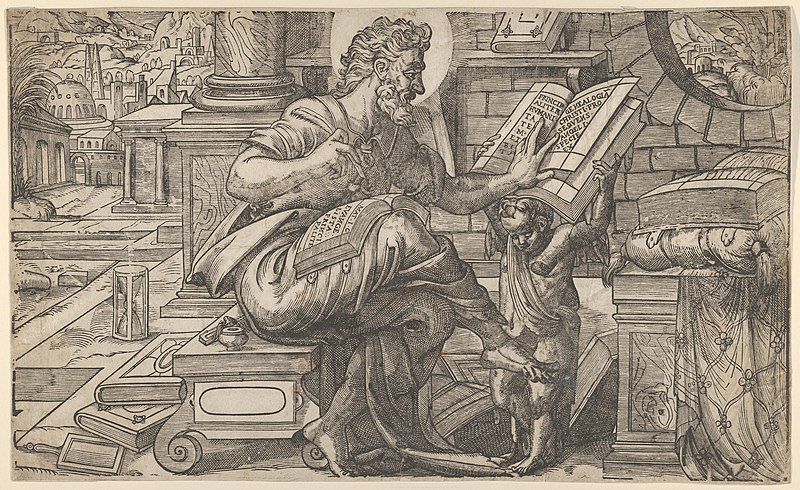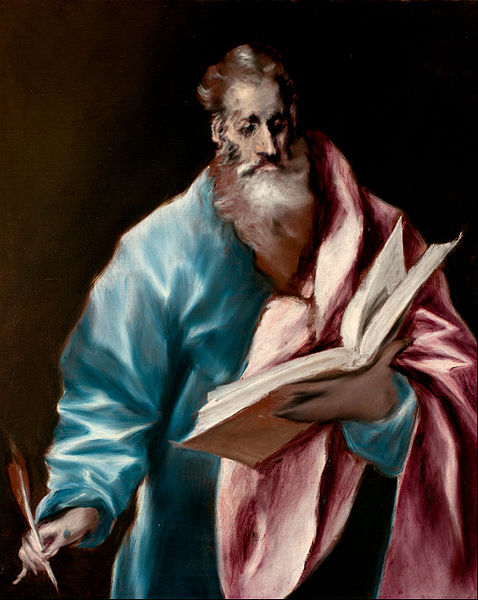
A Sinner Called by Christ
When the Scripture first introduces us to St. Matthew, he is a tax collector sitting at his booth (Matthew 9:9). By virtue of his job collecting taxes for the foreign Roman government, Matthew would have been considered a public sinner, cut off from the people of Israel. Yet even so, when our Lord Jesus passed by, he saw one of the twelve whom he would commission to be his witnesses, and so he called him. For his part, Matthew left his tax booth and followed after his Messiah.
Jesus would soon encounter opposition for calling such an undesirable person for his disciple. When the Pharisees saw him associating with Matthew and others like him, they asked his disciples why he even shared meals with tax collectors and sinners (Matthew 9:10-11).
Yet our Lord was not ashamed to be associated with sinners like Matthew—quite the contrary! Matthew was exactly the kind of person he had come to save. That is why Jesus himself answered the Pharisees: “Those who are well have no need of a physician, but those who are sick. Go and learn what this means: ‘I desire mercy, and not sacrifice.’ For I came not to call the righteous, but sinners” (Matthew 9:12-13).
After our Lord’s Resurrection, St. Matthew was commissioned to preach the gospel together with the other apostles. Unlike many of the apostles, his preaching did not only take oral form; he also wrote the Gospel associated with his name, through which we receive to this day his own testimony of the Lord who came to call sinners and use them to spread his gospel of forgiveness, life, and salvation.
A Brief History
As one of the Lord’s Apostles and an evangelist whose writings are read in the services of the Church, St. Matthew has been commemorated from the earliest days of the New Testament Church. It is unsurprising, then, that his feast day of September 21 is one of the most ancient ones of which we have a record, with the day being mentioned in Rome as early as the beginning of the fifth century.
This celebration has continued largely uninterrupted to the present day. Even after the Reformation when many lesser saints’ days were no longer commonly observed, St. Matthew’s Day remained a prominent part of the Lutheran liturgical calendar. Subsequently, the day could easily be found in the hymnals of many early Lutheran immigrants to the United States, and it is retained in the calendar of the Lutheran Service Book.

Collect
O Almighty God, who by Thy blessed Son didst call Saint Matthew from the receipt of custom to be an Apostle and Evangelist: grant us grace to forsake all covetous desires and inordinate love of riches, and to follow the same, Jesus Christ, Thy Son, our Lord, who liveth and reigneth with Thee and the Holy Ghost: ever one God, world without end. Amen.

Lessons
Epistle
Gospel
Resources
Issues, Etc. interview with the Rev. Dr. Jeff Gibbs on St. Matthew
Propers found in Daily Divine Service Book: A Lutheran Daily Missal, edited by the Rev. Heath Curtis
References:
1. Cowie, L. W. and John Selwyn Gummer, The Christian Calendar: A Complete Guide to the Seasons of the Christian Year Telling the Story of Christ and the Saints from Advent to Pentecost. G & C Merriam Company. 1974.
2. Parsch, Pius. The Church’s Year of Grace. The Liturgical Press. 1959.
3. Treasury of Daily Prayer. Concordia Publishing House. 2008.
Images:
1. St. Matthew, Rue Montorgueil, France, 1565-1575.
2. Apostle St. Matthew, El Greco, Spain, 1610-1614.
3. The Angel of Saint Matthew, Martin Schongauer, Germany, 1490.





[…] you look at the images from our earlier post on St. Matthew, you’ll notice that as an evangelist, he is often depicted with the book of the Gospel that he […]